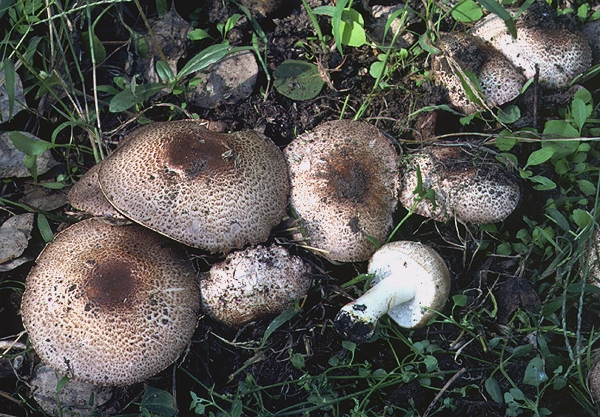
Agaricus augustus Fr.

Common name: Known as The Prince (in Europe) due to its excellent edible qualities.
Description: This mushroom produces very large caps commonly 1015 cm in diameter, but caps of up to 25 cm have been recorded. The caps are convex and covered in concentric circles of small, brown fibrillose scales against a paler, cream-white background. The cap margins almost always have white fragments of the veil still attached as a ragged fringe. The flesh is thick and white and smells pleasant, usually there is a distinct odour of almonds. The gills are at first protected by a white, membranous veil which breaks away as the cap expands and leaves fragments on the cap margins and a pendulous ring on the stem. The gills are free and are at first greyish, then become pinkish or reddish and finally very dark purple-brown or chocolate-brown. The stem is usually about 1015 cm long and 12.5 cm thick and is white with a pendulous, membranous ring attached about two thirds of the way up the stem. The stem is usually hollow with age and may have woolly scales on its surface below the ring.
The spores are 810 × 56 µm, ellipsoidal, smooth and bronze under the microscope but chocolate-brown in mass.
Substratum: Agaricus augustus occurs on rich soil in sheltered locations, often at forest margins. It usually occurs in small groups or clusters.
Distribution: Known from Queensland, New South Wales, Victoria and Western Australia. It is not known with certainty from Tasmania.
Notes: Agaricus augustus usually has a strong odour of almonds.

